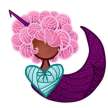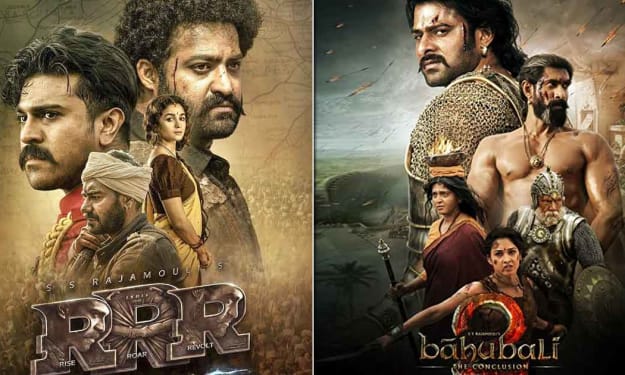Comic Heroes and Racism
Why are so many "canon" heroes white?

Every time I see a white person yell, “That’s not canon!” over a new twist on an old comic book hero my “mug o’ tears” gets a little fuller. When Zendaya was cast as MJ in Spiderman: Homecoming, so many comic book fans cried over the portrayal of a historically white character by a brown skinned actress. “MJ has red hair!” “MJ can’t be black!” and so on could be found all over the comic book fan forums. Meanwhile, POC finally got a chance to be represented as a main character in a classic comic book hero’s story.
Comic books—surprise, surprise—are a direct reflection of our social thinking, racial tolerance, and political climate. Try reading a comic book from 1933 and see how many racist and sexist undertones there are that were perfectly acceptable way back when. What was acceptable then isn’t what’s acceptable now. What people racially tolerated then ISN’T what we tolerate now.
The first successful comic book was Superman in 1938 and triggered a comic book “golden age” that lasted until the end of World War II. DC’s Batman and Wonder Woman were also published in the same year and later Captain America, Green Lantern, and others. Captain America comics would show the superhero fighting Adolf Hitler, Nazis, and other “villains” from that time. Captain America and other comics like this were called “war comics” since they reflected the battles of World War II. Comic books were used to reflect the times they were published in and show people what they COULD be and inspire to be. Young white men could look at Superman and see themselves in the light skinned, dark hair, damn near indestructible alien. Even white women saw themselves in the Amazonian Diana, aka Wonder Woman, as this powerful, self-sufficient, independent woman. The characters themselves weren’t racists—their messages are positive and inspire Americans to be better and DO more—but the lack of ethnically and racially diverse representation is painfully apparent.
The first time we see a POC superhero isn’t until 1966, when Black Panther was published. A quick history lesson as to what was going on in the ‘60s with POC:
- Brown v. Board of Education (1954) — The Supreme Court outlawed segregated public education facilities for blacks and whites at the state level. The Civil Rights Act of 1964 ended all state and local laws requiring segregation.
- The civil rights movement of the 1960s sparked a surge of Ku Klux Klan activity, including bombings of black schools and churches and violence against black and white activists in the South.
- In October of 1966, in Oakland California, the Black Panther Party for Self-Defense was founded. The Panthers practiced militant self-defense of minority communities against the U.S. government, and fought to establish revolutionary socialism through mass organizing and community based programs.
There was a lot going on for POC, and comic book artists and writers took note. The comic book Black Panther was created by an Austrian-Jewish Immigrant from Manhattan, New York. Black Panther first appeared in Fantastic Four and was the first mainstream African-American superhero. Although the Black Panther comics predate the 1966 founding of the Black Panther Party, the superhero is depicted fighting the KKK in its second arc. 17 pages were dedicated to the “Panther and the Klan” comic strip.
Black Panther fights the KKK the same way Captain America fought Nazis. As much as we want to remove politics and race from comic books, social issues will always creep into our mass media. A fury of African American superheroes came out after Black Panther with The Falcon in 1969, Luke Cage in 1972, Blade in 1973, and many others.
Modern comic books are way more diverse and include Latinx, Israeli, Black, Indian, and Native American characters, but the “big name” movies always receive the same backlash whenever directors decide to change things up a bit. Why? I can argue that people—especially die hard comic book fans—want to see their superhero look the same as from their childhood. That’s fair. OR I could argue that our media has a default “white is best” message and it’s time to shake things up a bit—or a lot.
It has been done. Marvel has characters like Nick Fury—a canon “white” comic book character—played by actor Samuel L. Jackson, a black actor. Thor’s Heimball is played by Idris Alba. And if MJ was jarring enough, Flash Thompson—a “canon” white comic book character—is played by Tony Revolori. Revolori isn’t white, he’s from Guatemala.
And like Pavlov's dog, many white fans came yelling with, “They’re not canon!” and “Stop race-lifting my heroes!” but here’s the thing, change is a good thing. POC can see themselves in major comic book heroes’ stories and go, “I can be that.” Our white comic book brothers and sisters need to see that they’re not the only ones who can be “super.” Give us—a modern comic book audience—a black Superman. Re-create Iron Man as a young genius black girl. Give us a Hispanic Wonder Woman and an Indian Batman. Show us our racial tolerance for what it is now: a melting pot of all people from every and any ethnic background getting the chance to be a superhero.
About the Creator
Yarn Goddess Cosplay
2018 is the year I decided to throw my voice in the mix and talk about cosplay community issues such as race, cosplay politics and overall share my experience and observations as a African-Caribbean Cosplayer.






Comments
There are no comments for this story
Be the first to respond and start the conversation.